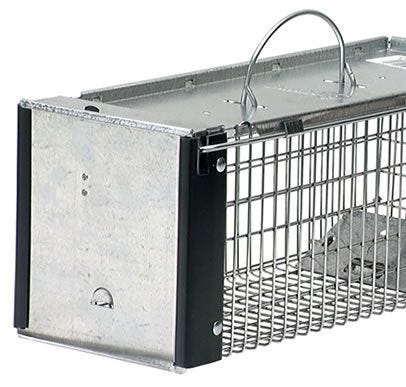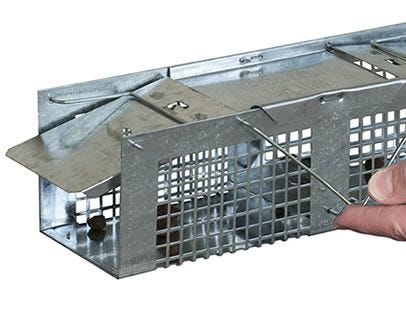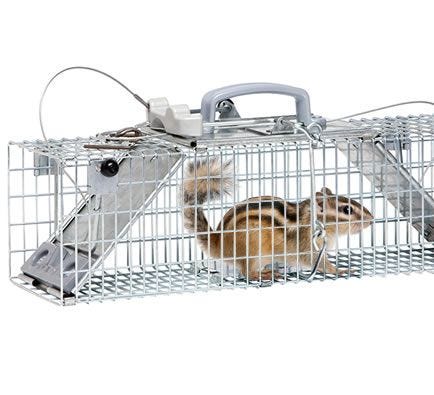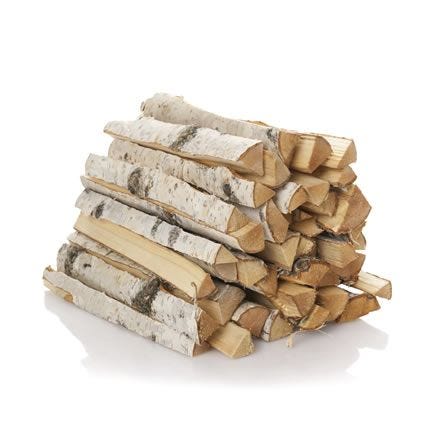





Chipmunks
How to Trap Chipmunks
A simple and humane way to remove chipmunks from your house or yard is to use a live chipmunk trap. Below, Havahart® offers step-by-step instructions that teach you how to capture a chipmunk using a live trap and what to do once you've caught one.
1 Select a Chipmunk Trap

The ideal live chipmunk trap is small - about 10-20 inches in length. Small traps have small mesh openings that prevent chipmunks from escaping or stealing bait. You can choose a 1-door or 2-door trap:
| 1-Door |
|
| 2-Door |
|
2 Determine Trap Placement

Position your trap in the location where you observe the most chipmunk activity. Chipmunks are drawn to secured, covered spaces, such as:
- attics or sheds
- along walls or fences
- underneath structures
- chipmunk burrows
- below trees
- near brush
TIP: Chipmunks often travel along walls or fences, especially when cover is available. Place a two-door trap next to structures like these to catch a chipmunk traveling in either direction.

3 Select and Position Bait
Follow these critical guidelines when baiting your trap:
- Select a bait that chipmunks can't steal: Spread peanut butter directly onto the trigger plate. If using a solid bait, select one that's larger than the mesh openings of the trap - unshelled peanuts are a great choice.
- Properly position your bait: Position the bait in a way that forces the chipmunk to step on the trigger plate (see diagram on the right).
For more baiting suggestions and expert tips, see How To: Chipmunk Baits »
4 Carefully Set Your Trap

Properly setting a chipmunk-sized trap may require the careful balancing of rods and door locks - follow your trap's unique instructions.
TIP: Set your trap in one simple step with Easy Set® technology.
Once set, you can test your trap by gently pressing the trigger plate. Small traps can be sensitive to vibration or movement, so try not to disturb the trap once it's set.

5 Check Trap Often
Chipmunks can become dehydrated, starved, or anxious when left trapped for too long. It's important that you check your trap often to ensure that a chipmunk is not caged for longer than necessary.

6 You've Caught a Chipmunk!
- Be gentle and speak softly when approaching and handling the trap.
- Wear gloves to avoid contact with a trapped chipmunk.
- If local laws permit, relocate the chipmunk at least 5 miles away from your home to prevent it from returning.
- After releasing a chipmunk, wash and disinfect the trap to prevent the spreading of disease.
7 Clean Up Attractants

Chipmunks love to burrow under piles of debris. Cleaning up unnecessary clutter and removing cover will make your property less attractive and accessible for chipmunks. Steps to take include:
- cleaning up birdseed/pet food
- clearing wood or brush piles where chipmunks may take cover, especially those adjacent to your home
- fixing broken vents and screens so chipmunks can’t enter your house
- sealing off any possible entryways or cracks in your home's foundation
- moving bird feeders at least 15 feet from any structure, so that spilled seed doesn't lure a chipmunk close to your house
TIP: Replace your birdseed with a kind chipmunks aren’t fond of, such as thistle.
Expert Tips
- Get to know the laws in your area before trapping and relocating a chipmunk.
- One of the best places to position a trap is outside of a chipmunk burrow. However, because chipmunks tend to camouflage burrow entrances, they are generally hard to find. If you identify a chipmunk burrow, place your trap along a path nearby.
- Before attempting to catch a chipmunk indoors, close off all doors, holes and cracks that chipmunks may use to escape to other parts of the house. Remember, chipmunks can squeeze through holes the size of a quarter, so cover up even the smallest cracks.
- Chipmunks have an extraordinary sense of smell, and even the faintest sign of human scent on your trap could deter one from entering. It’s important to clean your trap after every use and wear gloves when handling it - even when it’s empty.
- To disinfect your trap, use a bleach solution of 1 part bleach to 9 parts of water. Apply the solution and wait 20 minutes before wiping down the trap.
- To disinfect your trap, create a solution of 1 part bleach to 9 parts of water. Apply the solution, and wait 20 minutes before wiping down the trap.
- After removing chipmunks with a live trap, keep them out with Safer® Brand Critter Ridder® Animal Repellent.
